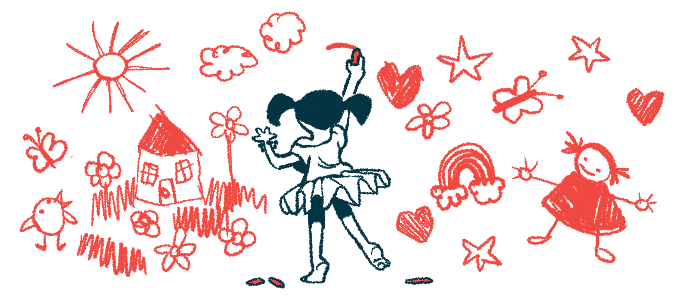Impacts on quality of life of children with VWD vary based on age
Study surveyed youngsters with the bleeding disorder, their caregivers

Children with von Willebrand disease (VWD) have reduced health-related quality of life, although the specific areas that seem to be most affected depend on age, a French study that surveyed children with the bleeding disorder and their caregivers has found.
While children ages 4 to 7 mainly experienced physical limitations, limitations in independence were more pronounced in older children. Those with type 3 VWD, typically the most severe form of the disease, had poorer scores in certain categories. However, survey responses were broadly comparable between disease types.
These kinds of patient- and caregiver-reported outcomes “are crucial to help clinicians understand the holistic burden of disease” researchers noted.
The study, “Health-related quality of life in children with von Willebrand disease: results of the French real-life Willebrand Study Health-related Quality of Life study,” was published in the Journal of Thrombosis and Haemostasis.
VWD can have negative impacts on quality of life across all types
In VWD, there is not enough working von Willebrand factor (VWF), a protein that helps the blood to clot. This leads to symptoms such as heavy bleeding and easy bruising. The genetic mutations that usually cause these problems are often inherited.
Clinicians can classify VWD into three main types based on the way and the extent to which VWF levels and activity are affected. In type 1, VWF levels are low but still detectable, while in type 3, VWF levels typically fall below detection limits. In type 2, an abnormal form of VWF that doesn’t work correctly is produced.
Across all these types, VWD may have negative impacts on quality of life.
“[Bleeding] episodes have not only physical but also psychological and emotional effects on both children and their families,” the researchers wrote, adding that “these repercussions can be measured by assessing their health-related quality of life (HRQoL), which has seldom been assessed in patients with VWD.”
In this study, the researchers aimed to describe these effects.
To that end, they recruited 117 participants younger than 18 from a larger VWD study. Most children had type 2 VWD (67.5%), followed by type 1 (17.9%), and type 3 (11.1%).
For participants who were at least 4 years old, both the children and the parents completed generic and VWD-specific quality of life assessments. There were different questionnaires for children younger than 8 and those ages 8 and older.
On the generic assessment, children ages 8 and older reported relatively high social quality of life. Physical quality of life also tended to be high. However, it was lower in those with type 3 VWD.
Across disease types, quality of life in this age group was lower in the domains of independence and treatment.
On a VWD-specific assessment, children also reported that the disease impacted their relationships with friends and their participation in sports.
Children’s self-assessments generally aligned with parents’ perspectives. However, parents “reported more mental and social impacts (reduced independence and inclusion) or physical limitation than their children regardless of the VWD type,” according to the researchers.
Younger children reported greater impacts on physical quality of life
Younger children (4 to 7 years old) and their parents completed different versions of these questionnaires. Children reported very little impact on mental and social quality of life, with greater impacts on physical quality of life, including daily activities like going to the doctor.
In contrast to the older age group, in which “adolescents were more optimistic than parents in some domains … children aged 4-7 years reported slightly poorer physical abilities” than their parents, the researchers noted. However, as with the older children, ratings from children and parents were strongly correlated.
Parents across age groups also rated satisfaction with VWD treatment and burden to the family related to the disease. Generally, “parents consistently report that all treatment approaches create significant burdens for their children,” the researchers wrote.
The … study confirmed that VWD can deeply impact children’s HRQoL from an early age, affecting not only physical health but also social functioning and family dynamics.
In terms of family burden, parents tended to report difficulty coping, negative parental impact, poor social integration for children, and financial burdens related to the disease. These effects were significantly larger for type 3 VWD.
“The … study confirmed that VWD can deeply impact children’s HRQoL from an early age, affecting not only physical health but also social functioning and family dynamics,” the researchers wrote.
Based on the findings, the researchers also suggested potential interventions to improve children’s quality of life. For example, in older children, advocating for more inclusive sport programs could be appropriate. Additionally, “cognitive behavioral therapy has demonstrated efficacy in improving emotional regulation and [quality of life] in children with hemophilia, suggesting potential benefits for VWD management as well,” they noted.
“Physicians should be aware that VWD, even in milder types, can reduce HRQoL in all dimensions and provide appropriate information and therapeutic education to families and children, even with less severe forms,” they wrote.







